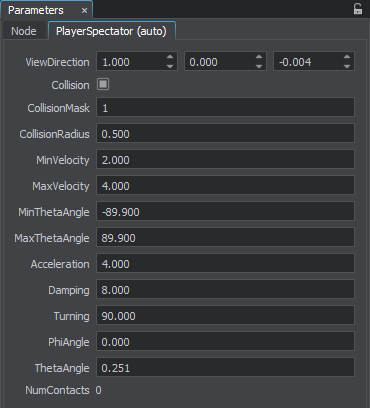Player Spectator
A player spectator is a free flying camera without a physical body, which is approximated with a sphere and therefore can collide with objects (however, it cannot, for example, push or interact with them).
As well as for a player actor, the viewing orientation of a player spectator in space is defined by 2 angles - theta and phi - and by the up vector that usually coincides with the Z axis:
- When changing the theta angle, the vertical view direction of the player actor changes.
- When changing the phi angle, the horizontal view direction and the basis of the player actor change.

A player spectator can be used to create a spectator mode that allows for observing the world. Due to collisions, movement of the camera can be limited by some space.
See also
- A PlayerSpectator class to edit players via UnigineScript
Editing a Player Spectator
In the Player tab, you can adjust the bit-masks and viewing frustum parameters of the spectator:

A Player Tab
Last update: 2018-06-04
Help improve this article
Was this article helpful?
(or select a word/phrase and press Ctrl+Enter)